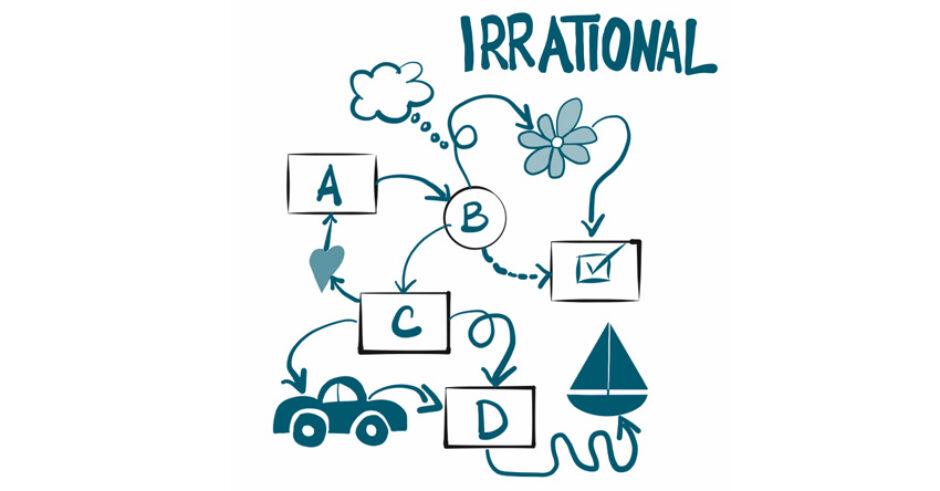When we design big strategic changes, we put together a logical and rational plan to implement them.
We assume that everyone effected will see the good in what we are doing, that decisions and actions will happen to a reasonable timetable. Simple huh!
Then the plan meets the people and it sort of doesn’t work the way you thought it would. Things run late, other things get in the way, others do not see the good in what you are doing and resist making the changes you need.
Imagine if you could predict these outcomes and plan for them. Imagine a world where the plan is right first time, every time.

What derails a rational plan?
Humans are not rational. There we have said it!
Research shows that we are irrational; we don’t follow logic in how we think or choose to act, however much we would argue that we do.
Our brains are overloaded, and we make shortcuts, common shortcuts that we use to make decisions and base our actions on.
The good news is that we are predictably irrational.
Which is why we need an Irrational Plan, one which takes into account the predictable irrationality that humans have. It assesses and recognises the hurdles we will have to overcome and gives a live reading of our likely chances of success.
What makes a great Irrational Plan?
Irrational Plans have three elements which make them special, they look at the Environment, the Scale of Change and the Readiness.
Environment
These things are not change specific and can be assessed early in the process, before the design has even started.
- What is the history of transformational change in the organisation or team?
How organisations have transformed or not in the past is a big indicator for your future success. Similar tension points and expectations are likely to exist. Plan to overcome. - What is the current culture of the organisation or team?
Culture is the socially acceptable behaviours of a team. It is often deeply ingrained and can be difficult to change. Know the culture and design the change with the current culture in mind. - What else is happening in the organisation or team?
Competing priorities, especially those that are near in, will compete for attention, time and resources.
Know what you are up against and plan for how to compete effectively, or accept that you can’t
What have you learned? What enablers and barriers will you face? How will you adapt that learning to your Irrational Plan?
Tools to help: History of Change (to follow), Culture, Prioritisation Matrix
Scale of Change

With the environmental factors assessed it is time to look at the change you are looking to make.
- How different is this way of thinking, doing or feeling to what your organisation and team currently do?
To get people’s attention we often resort to saying things are a ‘big’ change which often backfires as it creates a defensive wall that you have to overcome. Can this change be easily absorbed into our day to day lives. - Will the teams that you expect to change benefit from the change? Do they see the benefit?
Where you have a change which the benefits are quickly and positively achieved by those changing things are likely to move more smoothly, if those that need to change do not benefit it is harder and takes longer. - How comfortable are the change leaders with leading change? What is their track record like?
Where leaders are comfortable and have had past success at leading changes, they are more likely to be successful and quickly. Few of our leaders get to go to Change Leadership school and they often have mixed results. If you are unsure ask yourself the Three Killer Questions.
What is the chance of success? Do you need to improve/change the design? What preparation work will have to happen to create an environment for success?
Tools to help: To<From, 3 Killer Questions, Humans are Predictable, Six Things, Relationship Map
Are we ready?
Environment and Scale of Change sorted, are you ready to start the implementation?
An Irrational Plan looks at the leading indicators of whether your change is ready to move to the next stage or not. Moving before you have readiness is like living in a half-built house; full of compromises and few of the benefits.
- Are the decision makers ready, willing and able to make the decision you need of them?
Factor decisions for when the decision makers are ready rather than expecting them to fit to your schedule, then decisions will happen quickly. - Have you leaders accepted the change and are they (already) behaving in a way that supports it?
Imagine a world where the change leaders are already embodying the change and are ‘pulling’ it into the organisation. Things move very quickly.
An Irrational Plan will reduce your risks and give you the best chance of success. Use it!
Do you or your organisation need help creating an Irrational Plan?
Do you have a change that has not gone the way you expected and you don’t know why? If this feels like you, we are here to help. Click the button below


